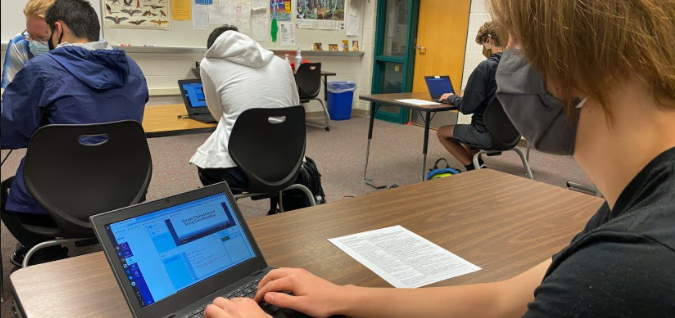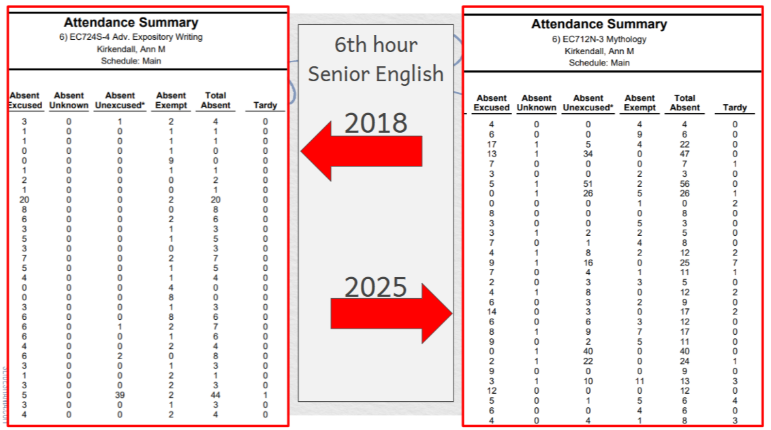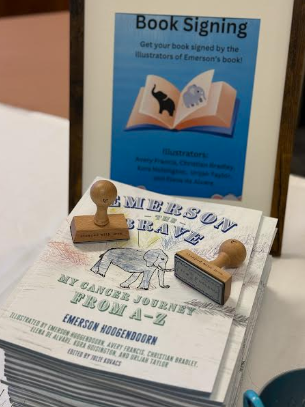In his first period class on a recent Monday, Jr. Gabe Giddings focused on his Chromebook. To most, the images on his computer appear as random gibberish, but for Giddings, it is a new language he is learning through two computer science classes at West Ottawa.
WO teachers recognized students’ potential and wanted to provide the opportunity to expand their knowledge in computer science. Instructor Pete Schwallier found that “there are students in each of my classes who have been on their own coding for years.” WO teachers made a goal to take students beyond what they already knew.
WO has been trying to grow its computer science program for years, but it has not been easy to find certified teachers for the class. “There just aren’t many teachers qualified to teach it because most people with this skill set are doing something more lucrative than teaching,” Instructor Andy Hamilton said. According to the US Bureau of Statistics, on average, a computer programmer makes about $86,550 per year, while a high school teacher makes around $61,660 per year. Luckily, two teachers at WO stepped up for their students and community.
Hamilton and Schwallier are the new instructors. In late 2018, they both agreed on taking different paths in the program- Hamilton learned Java and Schwallier learned Python.
Java is an advanced programming language developed by Sun Microsystems and is a popular choice for creating web applications. Python is also an advanced programming language that is designed to be straightforward.
The program consists of AP Computer Science A, AP Computer Science Principles, and Intro to Programming.
While teaching Tech Support Internship (TSI), Hamilton quickly became interested in programming. He dedicated his time to learning Java while teaching TSI at the same time. Soon after, Hamilton began teaching AP Computer Science A and AP Computer Science Principles. To provide the best learning path for the classes, he looked into the Amazon Future Engineer program.
According to their website, Amazon Future Engineer works on “inspiring and educating hundreds of thousands of students from underrepresented and underserved communities each year to try computer science and coding.” The program is found at more than 2,000 middle and high schools. Amazon Future Engineer provides a course guide for teachers and students. Luckily, West Ottawa was accepted into the program, allowing WO to start the program in the 2019-2020 school year.
Both Schwallier and Hamilton dedicated their summer of 2019 to learn the course. For Schwallier, it took about one whole day of learning a week. For Hamiton, it was five to six hours a day. He took it upon himself to go through his AP class’s work and complete the class himself so that he would be prepared to teach the course. Not only did he take out part of his summer, but he spent three to five hours a week in late 2018 and early 2019 learning the Java language.
As a father, Schwallier decided that he wanted to provide the best education for his children. Schwallier has two kids, his eight-year-old son, Landon, and his five-year-old daughter, Avery. Looking ahead, he wants both of his kids to be fluent in a computer science language but found that there were not enough options. “I decided that I not only want [computer science classes to be available] for my own kids, but I want everyone’s kids in the community to have that same opportunity,” Schwallier said. Schwallier took over the Intro to Programming course, which teaches the language Python.
Giddings took Intro to Programming with Schwallier in his sophomore year. “I was interested in the class because I knew that there are a lot of career opportunities with programming.” Giddings enjoyed the class. “It was pretty chill and you can work at your own pace as long as you get stuff done before it’s due.” He decided to continue with computer science, taking Hamilton’s AP Computer Science A course. Thinking ahead, Giddings does not plan on majoring in computer science but is planning to take computer science classes in hope of benefitting his career.
Before the COVID-19 pandemic, the class dynamic was students working together in class. “As the course goes on, it becomes more and more students collaborating and debugging things, so you’ll generally see more students around a single computer as they do more complex stuff. They start almost forming their own teams, the way that you would in the actual industry,” Schwallier said. Unfortunately, this year may be different due to COVID-19 restrictions.
Hamilton and Schwallier are taking their new classes head-on, carving a path for many students. Students will be able to go above and beyond in their future career paths. Whether they choose a computer science field, such as a software developer, or go into any other field, such as an insurance-rate-calculator. Not only will their knowledge in computer science help them rise to another level, but it will help them stand out against others.
For more information, please contact:
Pete Schwallier
Andy Hamilton







